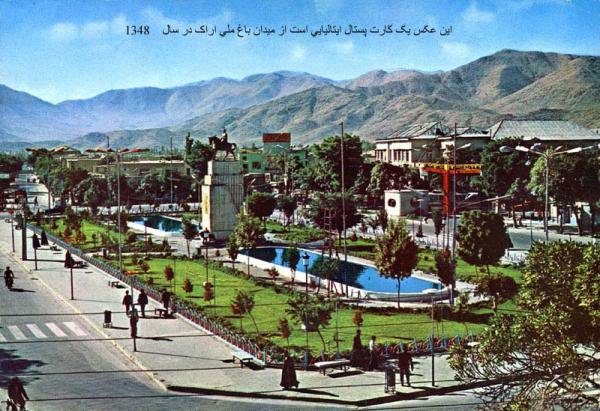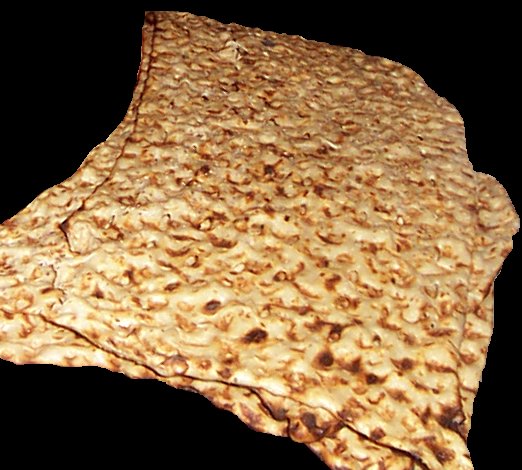|
Gosh-e Fil
Gosh-e fil (Persian: گُوش فيل; "elephant's ear") is a fried pastry from Iranian cuisine and also popular in Afghanistan. The dough is shaped like an elephant ear (''goosh''), and deep-fried in oil. Each piece is then topped with chopped pistachios and powdered sugar. This sweet is mainly served with tea, especially during Ramadan and Nowruz. The dough is made by whisking eggs, milk and butter, then adding the mixture to the dry ingredients. The delicious combination of Gosh-e fil and Doogh The city of Isfahan is one of the prominent cities of Iran, known as the city of delicious sweets, in which Gosh-e fil is eaten with a combination of local doogh (a combination of water and sour yogurt). This delightful combination has long been rooted in the food culture of the local people and continues to this day. See also * List of doughnut varieties * List of fried dough varieties * List of desserts A dessert is typically the sweet course that, after the entrée an ... [...More Info...] [...Related Items...] OR: [Wikipedia] [Google] [Baidu] |
Isfahan
Isfahan ( fa, اصفهان, Esfahân ), from its Achaemenid empire, ancient designation ''Aspadana'' and, later, ''Spahan'' in Sassanian Empire, middle Persian, rendered in English as ''Ispahan'', is a major city in the Greater Isfahan Region, Isfahan Province, Iran. It is located south of Tehran and is the capital of Isfahan Province. The city has a population of approximately 2,220,000, making it the third-largest city in Iran, after Tehran and Mashhad, and the second-largest metropolitan area. Isfahan is located at the intersection of the two principal routes that traverse Iran, north–south and east–west. Isfahan flourished between the 9th and 18th centuries. Under the Safavids, Safavid dynasty, Isfahan became the capital of Achaemenid Empire, Persia, for the second time in its history, under Shah Abbas the Great. The city retains much of its history. It is famous for its Perso–Islamic architecture, grand boulevards, covered bridges, palaces, tiled mosques, and mina ... [...More Info...] [...Related Items...] OR: [Wikipedia] [Google] [Baidu] |
Nowruz
Nowruz ( fa, نوروز, ; ), zh, 诺鲁孜节, ug, نەۋروز, ka, ნოვრუზ, ku, Newroz, he, נורוז, kk, Наурыз, ky, Нооруз, mn, Наурыз, ur, نوروز, tg, Наврӯз, tr, Nevruz, tk, Nowruz, uz, Navro'z is the Persian-language term for the day of the Iranian New Year, also known as the Persian New Year. It begins on the spring equinox and marks the beginning of Farvardin, the first month of the Solar Hijri calendar (an Iranian calendar used officially in Iran and Afghanistan). The day is celebrated worldwide by various ethnolinguistic groups and falls on or around the date of 21 March on the Gregorian calendar. The day of Nowruz has its origins in the Iranian religion of Zoroastrianism and is thus rooted in the traditions of the Iranian peoples; however, it has been celebrated by diverse communities for over 3,000 years in Western Asia, Central Asia, the Caucasus, the Black Sea Basin, the Balkans, and South Asia. Presently, ... [...More Info...] [...Related Items...] OR: [Wikipedia] [Google] [Baidu] |
Iranian Desserts
Iranian cuisine () refers to the culinary practices of Iran. Due to the historically common usage of the term "Persia" to refer to Iran in the Western world,Yarshater, EhsaPersia or Iran, Persian or Farsi, ''Iranian Studies'', vol. XXII no. 1 (1989) it is alternatively known as Persian cuisine, despite Persians being only one of a multitude of Iranian ethnic groups who have contributed to Iran's culinary traditions. The cuisine of Iran has made extensive contact throughout its history with the cuisines of its neighbouring regions, including Caucasian cuisine, Central Asian cuisine, Greek cuisine, Levantine cuisine, Mesopotamian cuisine, Russian cuisine and Turkish cuisine. Aspects of Iranian cuisine have also been significantly adopted by Indian cuisine and Pakistani cuisine through various historical Persianate sultanates that flourished during Muslim rule on the Indian subcontinent, with the most notable and impactful of these polities being the Mughal Empire. Typical Iran ... [...More Info...] [...Related Items...] OR: [Wikipedia] [Google] [Baidu] |
Pashtun Cuisine
Pashtun cuisine ( ps, پښتنۍ خواړه) refers to the cuisine of the Pashtun people and is covered under both Afghan and Pakistani cuisines. It is largely based on meat dishes including mutton, beef, chicken, and fish as well as rice and some other vegetables. Accompanying these staples are dairy products (yogurt, whey, cheeses), various nuts, local vegetables, and fresh and dried fruits. Peshawar, Kabul, Kandahar, Quetta and Islamabad are centers of Pashtun cuisine. Popular food items The following is an incomplete list of food items that Pashtuns enjoy eating. * Afghan burger * Aush (hand made noodles) * Aushak (vegetable and chive-filled dumplings topped with tomato and yogurt sauces) * Bolani, also called Piraki in some parts of Afghanistan * Badenjan (cooked eggplant in oil with potatoes and tomatoes) * Bhindi (cooked okra in oil with potatoes and tomatoes) * Biryani * Chapli kabab * Chopan Kabab (lamb chops, skewered and grilled on charcoal) * Dodai (a flat bread ... [...More Info...] [...Related Items...] OR: [Wikipedia] [Google] [Baidu] |
List Of Desserts
A dessert is typically the sweet course that, after the entrée and main course, concludes a meal in the culture of many countries, particularly Western culture. The course usually consists of sweet foods, but may include other items. The word "dessert" originated from the French word ''desservir'' "to clear the table" and the negative of the Latin word ''servire''. There are a wide variety of desserts in western cultures, including cakes, cookies, biscuits, gelatins, pastries, ice creams, pies, puddings, and candies. Fruit is also commonly found in dessert courses because of its natural sweetness. Many different cultures have their own variations of similar desserts around the world, such as in Russia, where many breakfast foods such as blini, oladyi, and syrniki can be served with honey and jam to make them popular as desserts. By type Brand name desserts A * Angel Delight B * Bird's Custard * Bompas & Parr * Butter Braid C * Cherrybrook Kitchen * Chicoo * Cool Wh ... [...More Info...] [...Related Items...] OR: [Wikipedia] [Google] [Baidu] |
List Of Fried Dough Varieties
This is a list of fried dough foods. Many cultures have dishes that are prepared by deep frying dough in many various forms. Doughnuts are a type of fried dough food that are covered separately in the Wikipedia article List of doughnut varieties. Fried dough foods }, ur, جلیبی, pa, ਜਲੇਬੀ, te, జిలేబి) or Jilapi ( bn, জিলাপী), this is a deep-fried sweet batter with rose water and saffron. Similar to Persian Zoolbiya. , - , Jersey wonders , , Jersey , These are also known as ''Mèrvelles'' , - , Jin deui , , China , A hollow fried pastry made of glutinous rice flour that is coated with sesame seeds and filled with a sweet filling. , - , Johnny Cake , , US Virgin Islands , Unleavened, golden-sweet, semi-flattened,fluffy-fried bread made primarily of white flour. , - , Kabkab , , Philippines , Deep-fried cassava wafers , - , Kachori , , India , Dough balls filled with different kinds of savoury stuffings like de-skinne ... [...More Info...] [...Related Items...] OR: [Wikipedia] [Google] [Baidu] |
List Of Doughnut Varieties
Doughnuts are a type of fried dough food. The following is a list of doughnut varieties. Variations and specialties by region The terms below constitute either names for different doughnut types created using local recipes, or for the local language translation of the term for an imported doughnut product. * Argentina – Kreppel, also called ''tortas fritas'' (fried pastries), is a fried pastry or quick bread that was introduced by German immigrants, and is similar to the Berliner. Facturas are a popular baked doughnut found in every corner bakery. Other names that may be seen in bakeries are ''berlinesas'' and ''bolas de fraile'' ("friar's balls"). * Armenia – ''Ponchik'', borrowed from Russian, is a deep-fried piece of dough shaped into a flattened sphere and filled with confiture or other sweet filling. ''Tukalik'' are similar to doughnut holes, and Armenian doughnuts are referred to as ''chickies''. * Australia – Kitchener bun, Similar to Berliner, but with an open ... [...More Info...] [...Related Items...] OR: [Wikipedia] [Google] [Baidu] |
Ayran
Ayran, doogh, dhallë, daw, xynogala or tan is a cold savory yogurt-based beverage popular across Western Asia, Central Asia, South Asia, Southeastern Europe, North Asia and Eastern Europe. The principal ingredients are yogurt, water and salt. Herbs such as mint may be optionally added. Some varieties are carbonated. Etymology ''Ayran'' (cf. '' airag'' in Mongolian: 'mare milk', ' (') in Chuvash: 'buttermilk') is mentioned in Mahmud al-Kashgari's 11th century ''Dīwān Lughāt al-Turk'', although he did not give any information how ayran was made. The word is derived from the Old Turkic root adır- ("to separate"), cf. Turkish ("to separate"). Preparation Doogh is served chilled and often as an accompaniment to grilled meat or rice, especially during summer. It is made by mixing yogurt with chilled or iced water and is sometimes carbonated and seasoned with mint. It has been variously described as "diluted yogurt" and "a most refreshing drink made by mixing yogurt with ice ... [...More Info...] [...Related Items...] OR: [Wikipedia] [Google] [Baidu] |
Ramadan
, type = islam , longtype = Religious , image = Ramadan montage.jpg , caption=From top, left to right: A crescent moon over Sarıçam, Turkey, marking the beginning of the Islamic month of Ramadan. Ramadan Quran reading in Bandar Torkaman, Iran. Community Iftar meal in Dubai, United Arab Emirates, Tarawah prayers in a mosque in West Sumatra, Indonesia. Foods served at a traditional Iftar meal. Ramadan decorations in Jerusalem. Zakat donation boxes in Taipei, Taiwan. , official_name = , observedby = Muslims , begins = At the last night of the month of Sha'ban , ends = At the last night of the month of Ramadan , date = Variable (follows the Islamic lunar calendar) , date2022 = 2 April – 2 May , celebrations = Community iftars and Community prayers , observances = * Sawm (fasting) * Zakat and sadaqah (alms giving) * Commemorating Qadr Night * Reading the Quran * Abstaining from all bad deeds and staying humble * Taraweeh prayer (Sunni Muslims) , relatedto = Eid al-F ... [...More Info...] [...Related Items...] OR: [Wikipedia] [Google] [Baidu] |
Arak, Iran
Arak ( fa, اراک, ''Arâk''; ) is the capital of Markazi Province, Iran. At the 2011 census, its population was 526,182, in 160,761 families. The city is nicknamed the "Industrial Capital of Iran". As a major industrial city, Arak hosts several industrial factories inside and within a few kilometers outside the city, including the factory of Machine Sazi Arak and the Iranian Aluminium Company. These factories produce nearly half of the needs of the country in steel, petrochemical, and locomotive industries. As an industrial city in a developing country, Arak suffers from air pollution. Etymology Arâk The term ''Arâk'' remains from a name given to the region since the medieval period. It derives from Arabic '' al-ʿIrāq'', meaning "root", itself derived possibly from Akkadian ''Uruk'' ( he, אֶרֶךְ, ''Erech''). But new research has shown that the word Arak has the same roots with the words Iran and Arran, and the name Iraq is an Arabicized Persian word. During the ... [...More Info...] [...Related Items...] OR: [Wikipedia] [Google] [Baidu] |
Iranian Cuisine
Iranian cuisine () refers to the culinary practices of Iran. Due to the historically common usage of the term "Persia" to refer to Iran in the Western world,Yarshater, EhsaPersia or Iran, Persian or Farsi, ''Iranian Studies'', vol. XXII no. 1 (1989) it is alternatively known as Persian cuisine, despite Persians being only one of a multitude of Iranian ethnic groups who have contributed to Iran's culinary traditions. The cuisine of Iran has made extensive contact throughout its history with the cuisines of its neighbouring regions, including Caucasian cuisine, Central Asian cuisine, Greek cuisine, Levantine cuisine, Mesopotamian cuisine, Russian cuisine and Turkish cuisine. Aspects of Iranian cuisine have also been significantly adopted by Indian cuisine and Pakistani cuisine through various historical Persianate sultanates that flourished during Muslim rule on the Indian subcontinent, with the most notable and impactful of these polities being the Mughal Empire. Typical Iran ... [...More Info...] [...Related Items...] OR: [Wikipedia] [Google] [Baidu] |
Pastry
Pastry is baked food made with a dough of flour, water and shortening (solid fats, including butter or lard) that may be savoury or sweetened. Sweetened pastries are often described as '' bakers' confectionery''. The word "pastries" suggests many kinds of baked products made from ingredients such as flour, sugar, milk, butter, shortening, baking powder, and eggs. Small tarts and other sweet baked products are called pastries as a synecdoche. Common pastry dishes include pies, tarts, quiches, croissants, and pasties. The French word pâtisserie is also used in English (with or without the accent) for the same foods. Originally, the French word referred to anything, such as a meat pie, made in dough (''paste'', later ''pâte'') and not typically a luxurious or sweet product. This meaning still persisted in the nineteenth century, though by then the term more often referred to the sweet and often ornate confections implied today. Pastry can also refer to the pastry dough, from w ... [...More Info...] [...Related Items...] OR: [Wikipedia] [Google] [Baidu] |








